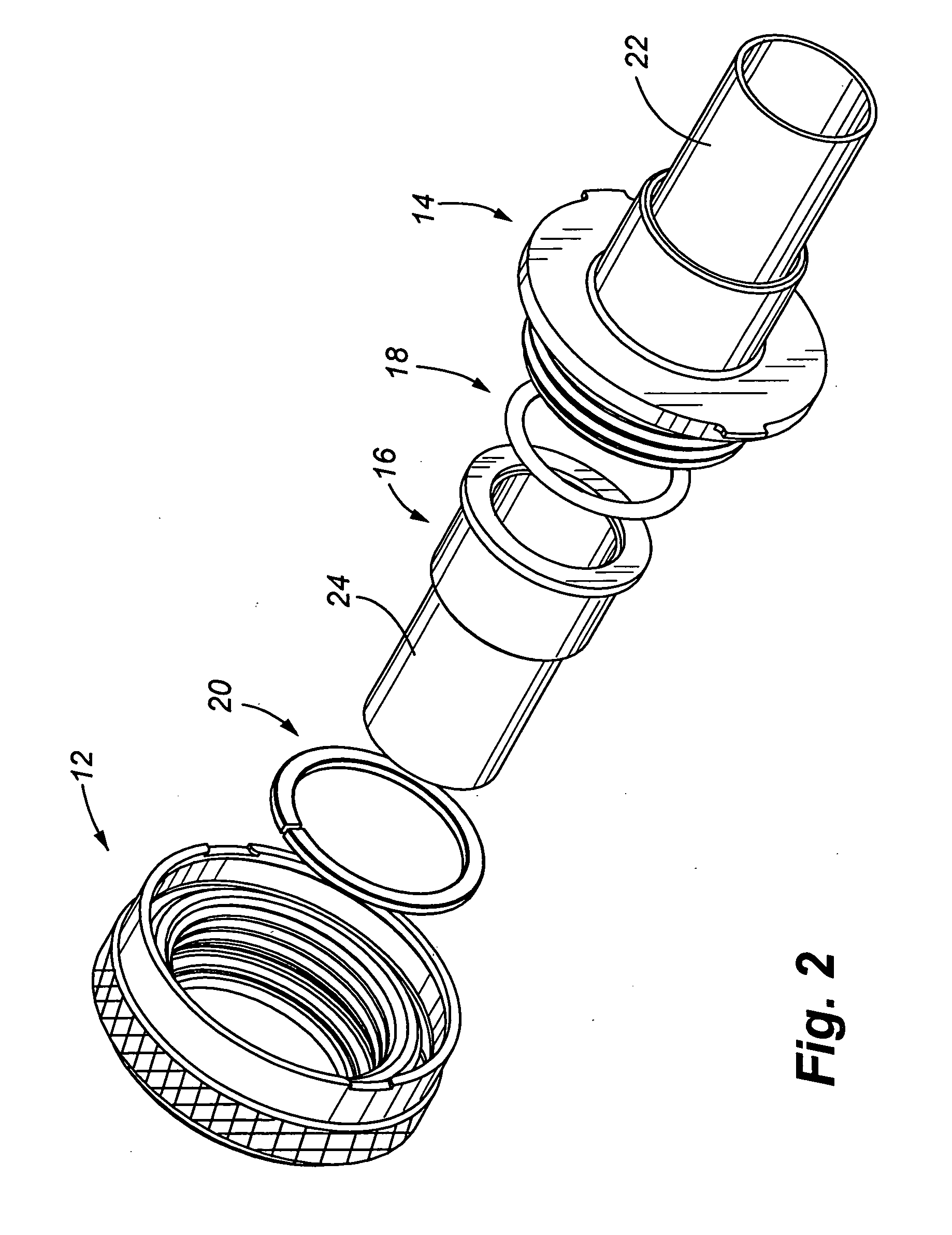Self-locking self-bonding regid coupling
a self-locking, regid coupling technology, applied in the direction of fluid pressure sealing joints, hose connections, mechanical equipment, etc., can solve the problems of looseness or flexibility of the connection between the first and second conduit members, and achieve the effect of enhancing electrical conductivity, minimal or no static buildup, and enduring electrical conductivity
- Summary
- Abstract
- Description
- Claims
- Application Information
AI Technical Summary
Benefits of technology
Problems solved by technology
Method used
Image
Examples
Embodiment Construction
[0035]FIGS. 1 and 2 illustrate the coupling assembly 10 of the present invention for rigidly connecting confronting ends of two conduit members.
[0036] Basic or primary components of the coupling assembly include a threaded flange or first coupling member 14, a lock nut group or second coupling member 12, a standard flange 16, an o-ring 18 positioned between a facing surface of the standard flange and a facing surface of the threaded flange, and a rigid connecting means or flat washer 20 that is positioned at the interface between the lock nut group and the standard flange.
[0037] Assembly of the coupling assembly includes placement of the flat washer 20 within the lock nut group and alignment with the opening of the lock nut group, and positioning the lock nut group over the standard flange so that when assembled, the flat washer 20 is trapped between an exterior shoulder 17 of the standard flange and an interior shoulder 45 of the nut body 44, as further discussed below.
[0038] Th...
PUM
 Login to View More
Login to View More Abstract
Description
Claims
Application Information
 Login to View More
Login to View More - R&D Engineer
- R&D Manager
- IP Professional
- Industry Leading Data Capabilities
- Powerful AI technology
- Patent DNA Extraction
Browse by: Latest US Patents, China's latest patents, Technical Efficacy Thesaurus, Application Domain, Technology Topic, Popular Technical Reports.
© 2024 PatSnap. All rights reserved.Legal|Privacy policy|Modern Slavery Act Transparency Statement|Sitemap|About US| Contact US: help@patsnap.com










